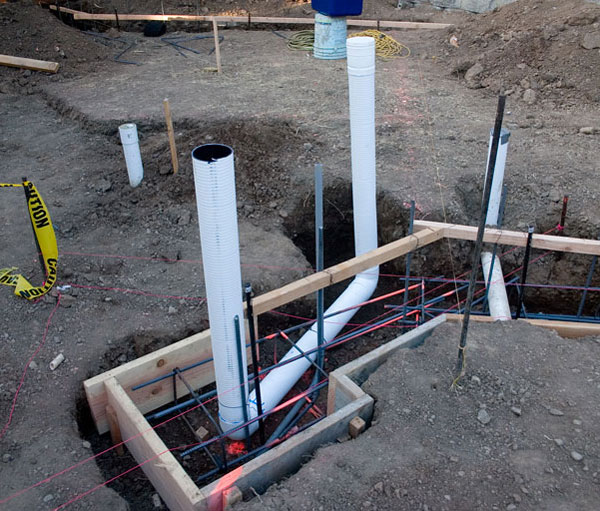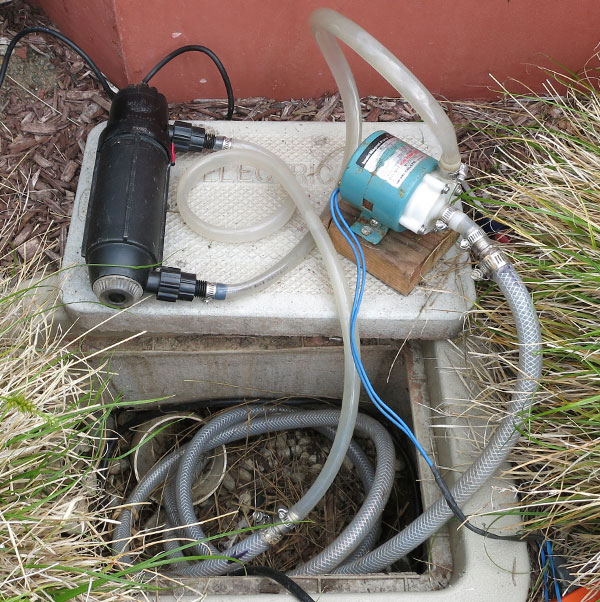
We had a low wall built in our back yard. Our project manager (aka, Lisa) had a feature requirement: "I want a bowl with water that flows up from the center and runs down the sides."
No problem. The scope of this was a bit beyond my skills since it involves both cutting stone and TIG-welding stainless steel. Spec it carefully and find good fabricators.



Closer image of the reservoir, which is a 16ga stainless canister, 6" in diameter, 12" deep, with a 12ga flat ring at the top. It's basically shaped like an inverted top hat. I drew the plans and had it fabricated at S & S Welding. The hole (arrow A) is the drain leading back to the pump.
The outer circle (arrow B) is the edge of the recessed contouring which allows the bowl to sit about an inch lower than the top of the stone slab.
Finding someone to do the stone work was difficult. After a lot of searching, I finally found Natural Rock Formations in Lockeford, CA. (4-hour round-trip from my house. ow.). I took them the bowl, the reservoir and the stone slab and told them essentially, "I need the reservoir to sit in a recessed hole - the bowl will sit on top". They said, "Ok, we'll dish it to match the curve of the bowl and countersink the reservoir lip into the stone." Cool! The hole was cut with a water jet and the recession was done by hand with a cutting wheel. They were awesome.

